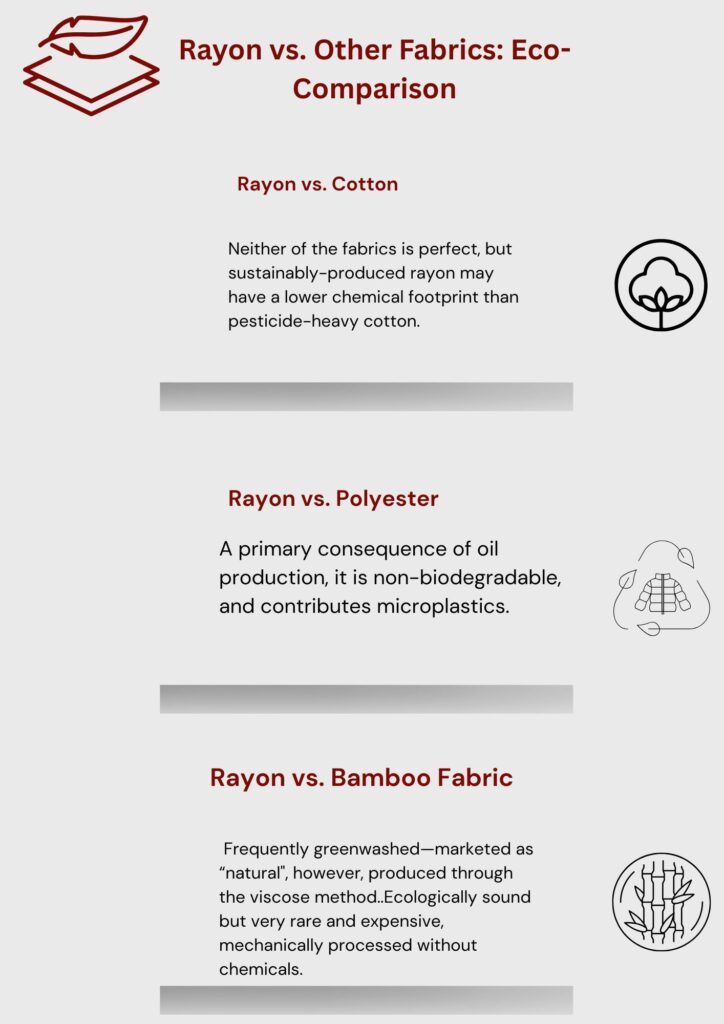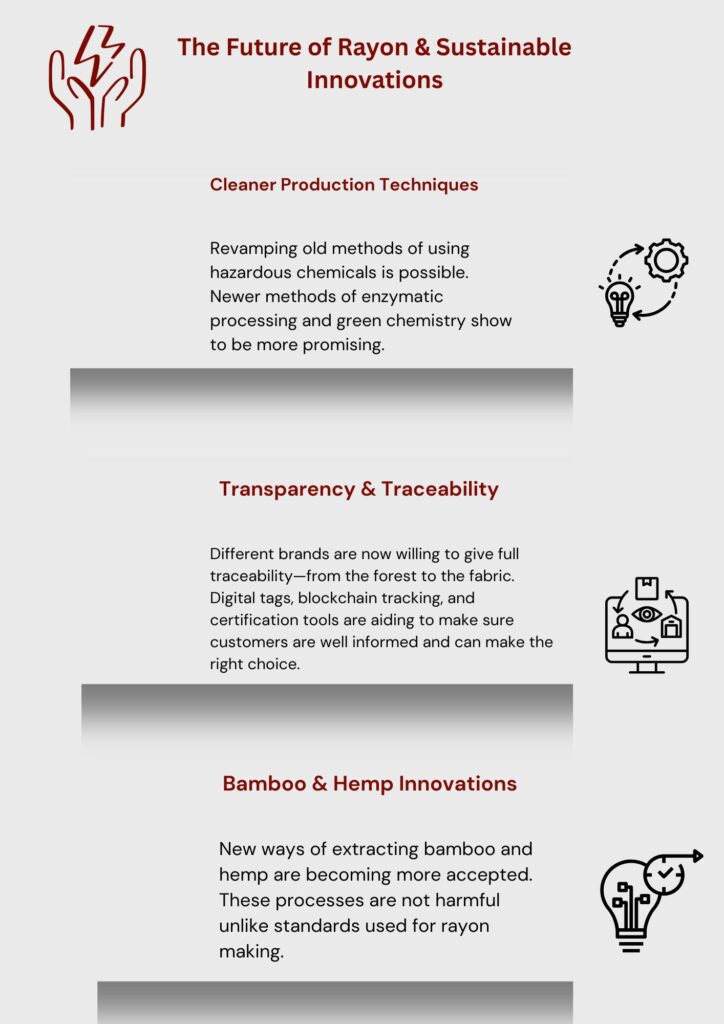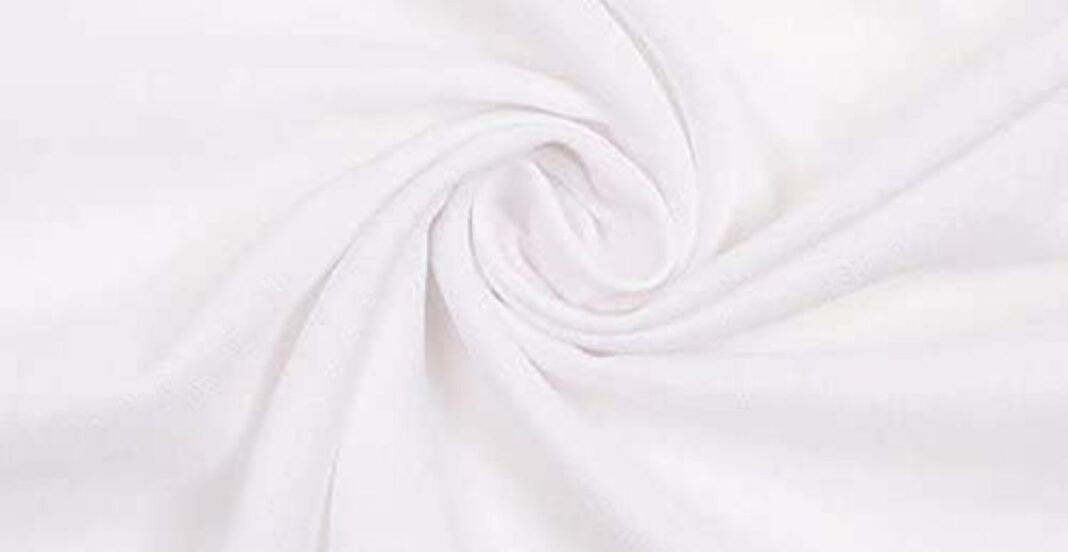Introduction
Practice and bustle around the fabric rayon depict it as a synthetic semi-structured textile. Its silky texture, along with breathability to an extent makes it preferred for dresses, bed linens, and curtains. As sustainability concerns grow, many individuals are actively analysingIs rayon eco-friendly the construction elements behind their clothes.Is rayon eco-friendly
Concerns related to the environment particularly with the fast fashion sector have been rising. There is a noticeable emphasis towards semi – sustainable textile construction. Cotton and organic clothes like herrings are often identified as sustainable but pose challenges with skepticism. It gives rise to the pivotal question – does marketing hype revolve around rayon fabric being eco friendly while its reality is completely different?
We may not wish to accept, but exposing the truth regarding the real world impacts of production, as well as the origins of rayon helps uncover questions that many tend foresee.
What is Rayon?
Rayon is created from natural cellulosic materials like wood pulp. Processes such as industrial and other chemical transformations help derive from such materials. Due to its origins, its mid-position between a completely synthetic or natural fabric enables a versatile use while making it popular within the textile pclnditecture.
Types of Rayon
Different types of rayon exist, each with distinctive characteristics and methods of production:
- Viscose Rayon: This is usually the most common type. It is produced using a chemical-laden process with wood pulp as the primary raw material.
- Modal: This is stronger and softer than Viscose. It is usually made from beech trees.
- Lyocell (including TENCEL™): This includes newer forms of rayon technology which are produced via closed-loop production systems which are less harmful to the ecosystem.
Why Rayon is Popular
Its ability to replicate natural fibers such as silk or cotton makes rayon cheaper. In addition, rayon fabrics are:
- Breathable and lightweight: Great for use in summer clothes.
- Have a smooth and soft touch which helps comfort.
- Better then average durability and can retain vibrant and rich colors after dying.
The above features makes rayon a cheap alternative in modern fashion. This raises the question: What impact does it have on the environment?
How is Rayon Produced?
Rayon is produced from wood, but undergoes significant chemical transformation. This production involves processes that greatly strain the ecological balance.
From Trees to Threads: The Process
- Harvesting Wood: Eucalyptus, beech, or bamboo trees are harvested.
- Pulping: The wood is converted to cylindrical logs of cellulose pulp.
- Chemical Treatment: This stage involves the application of harsh chemicals to dissolve pulp.
- Spinning: Solution is spun into fibres.
- Washing and Drying: The fabric is woven, dried and cleaned after fiber washing.
Chemicals Involved
Rayon production processes require highly dangerous chemicals such as;
- Carbon disulphide (CS₂): associated with health issues recorded among workers.
- Sodium hydroxide (caustic soda): applied in dissolving wood pulp.
- Sulphuric acid: used for the conversion of pulp into fibres.
Harmful productions mentioned above emit substances that interfere with water systems for instance freshwater bodies, aqua fauna and flora, and local populations.
Environmental Concerns
Rayon is a fiber produced out of natural raw materials. However, it is well known for having severe environmental impacts such as:
- Deforestation: Unsustainable wood logging results in the destruction of ecosystems.
- Water Pollution: Rivers are often contaminated with untreated chemical waste.
- Worker Safety: Health-damaging toxic liquids and chemicals put laborers at risk.
With these points stated, the question, Is rayon eco-friendly?, can only be answered with consideration of its method of production.
Is Rayon Sustainable? A Closer Look
The sustainability of rayon is rather multifaceted. Though its characteristics can be perceived as positive or eco-friendly, it largely depends on the source and production processes.
The Pros of Rayon
- Biodegradable: Rayon is produced from bamboo and eucalyptus which are fast-growing trees. Thus, they are classified as renewable resources.
- Closing the loop: Lyocell (TENCEL™) brands utilize a closed-loop system where 99% of solvents are reused, making them near waste-free.
These arguments will undoubtedly enhance the outlook for eco-conscious pajama brands and consumers.
The Cons of Rayon
- Viscose production streams release toxic waste as a byproduct.
- Some companies harvest wood from unsustainable forests.
- Use of water and power, especially during the chemical treatments, is extremely high.
This answers the question of whether rayon is eco-friendly; it depends on the sourcing and processing methods, and on eco-calculations, it is best not to fully rely on environmental rayon.
Rayon vs. Other Fabrics: Eco-Comparison
It helps to compare rayon with other popular fabrics to analyze both its pros and cons.

Rayon vs. Cotton
- Water Requirement: One t-shirt requires over 2,700 liters of water. Cotton does need a lot of water.
- Pesticides: Ecologically harmful pesticides are used in cotton cultivation.
- Rayon: While less water intensive, it’s more chemically processed
Neither of the fabrics is perfect, but sustainably-produced rayon may have a lower chemical footprint than pesticide-heavy cotton.
Rayon vs. Polyester
- Polyester: A primary consequence of oil production, it is non-biodegradable, and contributes microplastics.
- Rayon: It biodegradable, but its decomposition can contribute to chemical pollution.
- Verdict: Rayon is superior in biodegradability but only when certified and responsibly manufactured.
Rayon vs. Bamboo Fabric
- Bamboo Rayon: Frequently greenwashed—marketed as “natural”, however, produced through the viscose method.
- True Bamboo Linen: Ecologically sound but very rare and expensive, mechanically processed without chemicals.
- Conclusion: Beware of “bamboo rayon” labels, often misrepresented.
So, is rayon compared to other fabrics eco-friendly? With the exception of sewing organic cotton to it for added softness, it is eco-friendly only sometimes.
Certifications & Eco-Friendly Rayon Alternatives
Innovations and certifications would help the consumer make a better decision.
FSC-Certified Rayon
FSC (Forest Stewardship Council) certification ensures responsible harvesting of a given wood pulp. The use of FSC-certified rayon contributes to the fight against deforestation while promoting biodiversity.
TENCEL™ Lyocell & Modal
Fibers of TENCEL™ and LENCING are derived from closed-loop systems which recycle solvents. They also source from certified forests, which is a plus when it comes to reducing environmental footprint.
OEKO-TEX® & Bluesign®
These certifications represent the more responsible use of harmful chemicals in production. OEKO-TEX® deals with chemical safety in textiles while Bluesign® looks at the whole supply chain.
All these certifications together validate brands marketing their rayon as eco-friendly, thus giving credibility to falsified claims.
Avoid Misleading Terms
Stay clear from:
- “Bamboo rayon” without certification.
- “Eco-rayon” with no proof.
- Generic viscose with unknown sourcing.
Transparency is key when asking, is rayon eco-friendly?
Support Conscious Brands
Look for companies that:
- Provide information on their supply chain
- Have closed-loop operations
- Have environmental programs
Research contributes to making greener clothes.
The Future of Rayon & Sustainable Innovations
There is advancement in the production process of Rayon. As more people look for environmentally friendly options, and as innovation increases, the way things are done will be much brighter.

Cleaner Production Techniques
Revamping old methods of using hazardous chemicals is possible. Newer methods of enzymatic processing and green chemistry show to be more promising.
Transparency & Traceability
Different brands are now willing to give full traceability—from the forest to the fabric. Digital tags, blockchain tracking, and certification tools are aiding to make sure customers are well informed and can make the right choice.
Bamboo & Hemp Innovations
New ways of extracting bamboo and hemp are becoming more accepted. These processes are not harmful unlike standards used for rayon making.
Even though progress is slow it is evident. The awareness rising about the impact textiles have is becoming much stronger.
Conclusion
Rayon has both good and bad features in relation to sustainability. It is derived from renewable resources and is biodegradable. However, the chemical-intensive production and associated deforestation are concerning.
At least now there are more sustainable options out there like TENCEL™ and rayon from FSC certified sources. Certifications like OEKO-TEX® and Bluesign® help green consumers find better choices.Concerns related to the environment particularly with the fast fashion sector have been rising. There is a noticeable emphasis towards semi – sustainable textile construction. Cotton and organic clothes like herrings are often identified as sustainable but pose challenges with skepticism. It gives rise to the pivotal question – does marketing hype revolve around rayon fabric being eco friendly while its reality is completely different?
FAQs
Rayon comes from natural cellulose which comes from trees like bamboo and eucalyptus. It is plant-based, but it undergoes a lot of chemicals to become fabric.
Rayon is bia-semima synthetic or semi-synthetic fabric as it is made from regent cellulose fiber. It is not completely natural like cotton, nor is it completely plastic like polyester. It is semi natural as the processing is done with chemicals.
Yes, under good environments rayon is compostable due to its silk like texture. Unlike polyester, it has the ability to fully decompose when in natural conditions. It, however, does not damage the environment, but its impacts depend from the manufacturing and dying process.


